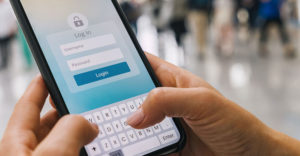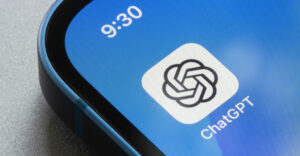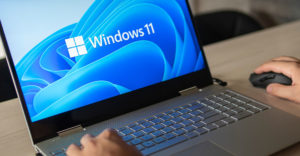A company with a promising technology to fight plagiarism announced Tuesday that it has received US$6 million in venture capital to expand its efforts to expose cribbers.
Copyleaks, which has offices in Tel Aviv and Stamford, Conn., uses artificial intelligence to identify similarities and understand the meaning of textual content. In addition to flagging plagiarism, the technology can be used to protect website content, compare website content, compare files, and compare programming code.
The ability to compare websites is an interesting wrinkle in Copyleaks. “You can compare your website to a competitor’s website to see if there’s too much overlap in what they’re saying about their product and yours,” said Karen Kovacs North, director of the Annenberg Program on Online Communities at the University of Southern California.
“It can be used to accuse other people of intellectual property violations,” she told TechNewsWorld.
Copyleaks CEO and Founding Partner Alon Yamin explained in a statement that the company’s technology can recognize a writer’s “voice” and the meaning of things in the original text, thus managing to carry out a comparison and identify any non-original text in more than a hundred languages.
“The great advantage of our system is our AI capabilities, which allow us to truly understand the text and thus identify non-original content that has been edited in one way or another,” he said. “Our service is offered both in the form of an online service to millions of registered users and as an API embedded in the systems of our hundreds of institutional customers, and enables them to meet their unique content needs.”
Copyleaks clients that are using its technology to protect their copyrights include educational institutions such as Stanford University; content producers Macmillan Publishers, the BBC, and Medium; and large corporations like Cisco and Accenture.
This video shows Copyleaks in action.
Hot Education Market
Founding Partner and CTO Yehonatan Bitton noted in a statement that the new money flowing into the company will be used to increase the number of developers it has in Israel and to strengthen its technology.
“Copyleaks is a clear technology leader in the space of plagiarism detection,” David Sikorsky, a partner at JAL Ventures, which backed the latest round of funding for the company, said in a statement.
“Its use of artificial intelligence allows for a very thorough search of similar texts across many sources, including translated text,” he continued. “While plagiarism detection has obvious benefits in the education market, there are many other uses in the enterprise sector that this technology is already addressing.”
While there may be uses outside the education market for Copyleaks technology, there may not be a hotter market for it. According to a report from Research and Markets, the anti-plagiarism market will be growing at a brisk 12.5% compound annual growth rate over the next five years, from $1.09 billion in 2021 to $2.16 billion in 2027.
The report noted that the growth of the anti-plagiarism market for the education sector is being driven by factors such as the rising demand for digital content in the education sector, growing educational expenditure in emerging economies, increasing adoption of smartphones, tablets, computers, and laptops for learning and the rising cases of cheating and plagiarism in schools, colleges, and research institutes.
In countries like United Kingdom, France, Germany, India, China, and the United States, the cases of plagiarism have surged significantly over the past few years, it added.
Student Motivator
“With new forms of assessment, new methods to obtain and cite information, and the added pressures of the pandemic, safeguarding academic integrity has become much more complex,” said Annie Chechitelli, chief product officer at Turnitin, maker of software for scanning student writing for plagiarism, in Oakland, Calif.
“Advanced forms of plagiarism are difficult to identify from contract cheating and word spinning to bot writing,” she told TechNewsWorld.
Contract cheating occurs when students outsource their assigned work to a third-party and submit it under the pretense of being their own work. Word spinners are software programs designed to manipulate plagiarized content to avoid detection by plagiarism detectors. Bot writing is writing created with the assistance of artificial intelligence.
Chechitelli explained that Turnitin uses forensic linguistics to identify authorship of a writing piece and software built from deep-learning language models, such as GPT-3, to detect bot writing.
“Further,” she added, “Turnitin’s content database cross-checks submitted work for text similarity. The content database helps students, educators, researchers, and publishers surface potential plagiarism by uploading and comparing submissions against more than 82 million scholarly articles provided and owned by the world’s premier academic publishers.”
North said what she likes about Turnitin is it shows her the overlap between a student’s assignment and other sources, and a screenshot of them, highlighting the words that overlap. “I can see what my student turned in versus what was turned in — word for word — elsewhere, with the overlap words highlighted,” she explained.
“One reason that some faculty use Turnitin is that by just announcing that we are checking on students’ work, they’re more motivated to work independently because they know that they just can’t copy material,” she added. “It’s not just a plagiarism detector, it can be a motivator to do independent work, too.”
Just Google It
Turnitin is also used at Northeastern University in Boston, but Journalism Professor Dan Kennedy said he hasn’t needed to use it.
“I’ve had several incidents over the years where I strongly suspected a student is committing plagiarism,” he observed. “I just took the phrase or sentence that looked plagiarized and Googled it, and on several occasions I have discovered deep-seated plagiarism in the assignments.”
“I’ve found that’s all I need because a student that is not a very good writer will all of sudden have a sentence or two in the middle of something that they’ve written that doesn’t sound like them at all,” he noted.
“I don’t know if the students are getting more honest or not,” he added, “but I’ve been teaching for 16 years, and it seems that the worst plagiarism situations I ran into were early in my career. I really haven’t had much in recent years.”

























































